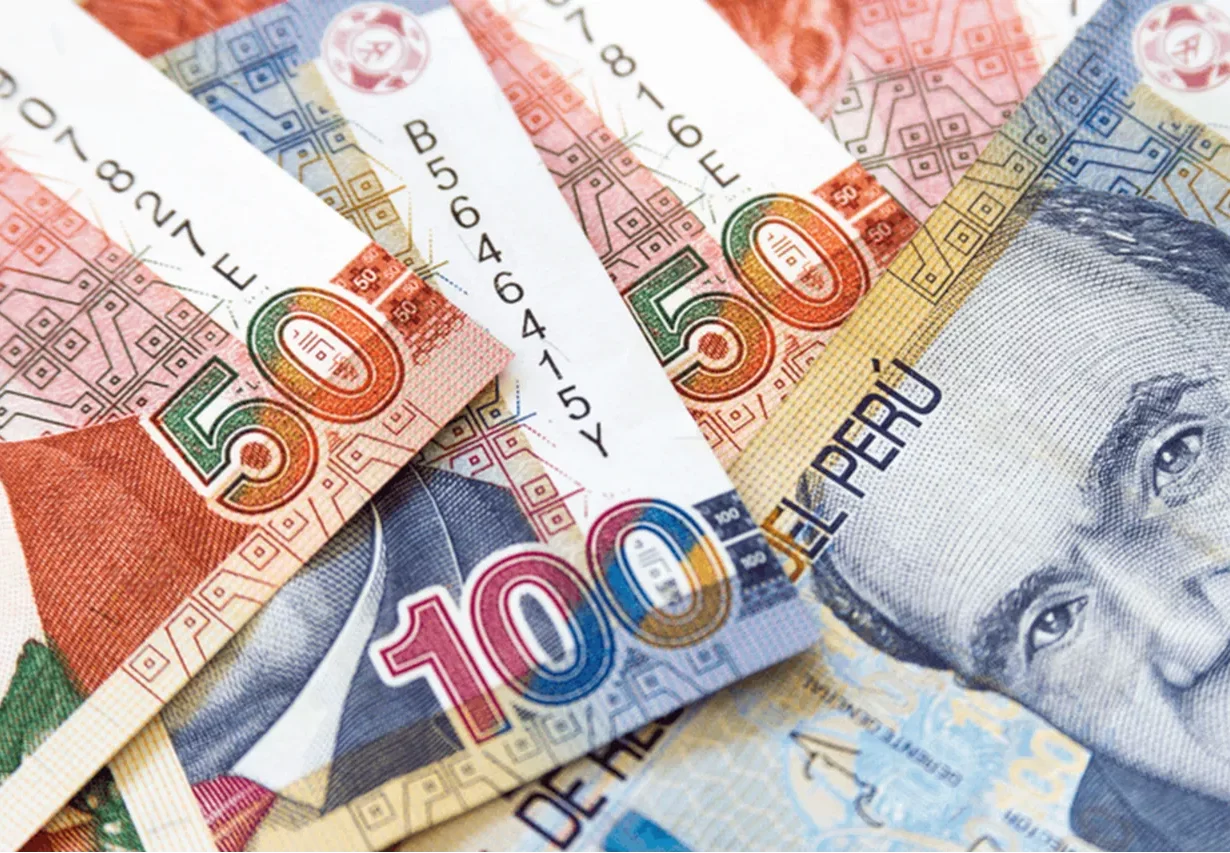Why is the dollar to sol exchange rate important?
Understanding the value of the exchange rate between dollars and soles is crucial for anyone planning to travel to Peru. Here’s why:- Smooth Financial Transactions: Knowing the current dollar to sol exchange rate ensures that travelers can accurately budget their expenses and calculate the cost of items or services in their home currency.
- Comparative Pricing: The exchange rate allows travelers to compare prices between countries and make informed purchasing decisions. By converting prices to their home currency, they can assess whether goods or services are more affordable in Peru or in their own country.
- Budgeting and Planning: The exchange rate impacts the purchasing power of travelers. A favorable exchange rate allows them to get more value for their money, while an unfavorable rate may require them to adjust their budget and spending habits.
- Avoiding Overcharges: Being aware of the exchange rate helps travelers avoid being overcharged or taken advantage of by merchants who may offer unfair exchange rates.
Understanding the basics of currency conversion
Currency conversion is the process of exchanging one currency for another. In the context of dollars to soles in Peru, understanding the basics of currency conversion is essential for smooth financial transactions and effective budgeting and planning. Core principles of currency conversion include:- Exchange Rate: The rate at which one currency can be exchanged for another.
- Bid and Ask Price: The bid price is the rate at which the bank or currency exchange will buy the currency, while the ask price is the rate at which they will sell it.
- Spread: The difference between the bid and ask price, which represents the profit for the bank or currency exchange.
- Currency Exchange: A bank or currency exchange office where individuals can exchange one currency for another.
- Currency Converter: Online tools or mobile apps that provide real-time exchange rates for different currencies.
- Foreign Exchange Market: The decentralized market where currencies are traded and exchange rates are determined.
- Currency conversion enables individuals and businesses to transact in different currencies, facilitating international trade and travel.
- Exchange rates are influenced by factors such as economic stability, inflation, and government policies.
- Fluctuations in exchange rates can impact the cost of imported goods, travel expenses, and investment returns.
- Comparative Pricing: Knowing the exchange rate allows individuals to compare prices in different currencies and make informed purchasing decisions.
- Budgeting and Planning: Understanding the exchange rate helps individuals plan their expenses, especially when traveling or living in a foreign country.
- Avoiding Overcharges: Being aware of the exchange rate ensures that individuals are not overcharged when converting currencies.
- Exchange Rate Volatility: Exchange rates can fluctuate rapidly, making it challenging to accurately predict or budget for currency conversions.
- Transaction Costs: Banks and currency exchanges often charge fees or apply unfavorable exchange rates, affecting the overall cost of currency conversion.
- Increasing use of digital currencies like Bitcoin and cryptocurrencies may impact traditional currency conversion methods.
- Technology advancements, such as blockchain, could streamline and enhance the transparency of currency conversion transactions.
- Currency Hedging: A risk management strategy used by businesses to protect against potential losses caused by fluctuations in exchange
Factors that affect the dollar to sol exchange rate
The exchange rate between the dollar and sol is influenced by several key factors. Understanding these factors is crucial for individuals engaged in financial transactions involving these currencies. Here are some core principles and components that play a role in determining the exchange rate: 1. Economic Stability: Economic stability in both the United States and Peru is a significant factor that affects the dollar to sol exchange rate. Stable economies tend to have more favorable exchange rates. 2. Interest Rates: Differences in interest rates between the two countries can impact the exchange rate. Higher interest rates in one country compared to the other can attract investors, resulting in currency appreciation. 3. Inflation: Inflation rates affect the purchasing power of a currency. When one country experiences higher inflation than the other, its currency tends to depreciate in value. 4. Government Policies: Government policies, such as monetary policies and trade agreements, can have a direct impact on the exchange rate. Changes in policies can lead to fluctuations in the rate. 5. Political Stability: Political stability is closely tied to economic stability. Political uncertainties, such as elections or geopolitical events, can influence exchange rates. These factors interact with each other and can lead to fluctuations in the exchange rate. It is essential for individuals to stay informed about these factors to make informed decisions when engaging in currency exchange or international transactions. Note: For a more detailed understanding of these factors, please consult reputable financial sources or consult with a financial advisor.Historical trends and fluctuations in the exchange rate
Understanding the historical trends and fluctuations in the exchange rate between dollars and soles is crucial for individuals and businesses alike. By looking at the past performance of the exchange rate, one can gain insights into potential future changes and make informed decisions.Key Components of Historical Trends:
- Economic Stability: Changes in economic stability can impact exchange rates. A strong economy tends to lead to a stronger currency, while a weaker economy can result in a depreciating currency.
- Inflation: High inflation can erode the value of a currency, leading to a decrease in its exchange rate. Conversely, low inflation can help maintain a stable exchange rate.
- Interest Rates: Higher interest rates generally attract foreign investors, increasing the demand for the currency and potentially strengthening the exchange rate.
- Government Policies: Government interventions and policies aimed at stabilizing or influencing the exchange rate can have significant effects on its fluctuations.
- Political Stability: Political instability can introduce uncertainty and impact the exchange rate. Countries with stable political environments are often viewed as more attractive to investors, leading to a stronger exchange rate.
Practical Applications and Challenges:
Understanding historical trends in the exchange rate can be beneficial for various reasons:- International Transactions: Individuals and businesses engaged in international trade can minimize exchange rate risks by timing their transactions based on historical trends.
- Investments: Knowledge of historical exchange rate fluctuations can help investors make informed decisions about currency-dependent investments.
- Comparative Pricing: Understanding historical exchange rates allows for accurate comparison of prices between different countries, aiding in budgeting and cost estimation.
Future Developments and Trends:
The exchange rate is subject to various external factors that can shape future trends, including geopolitical events, global economic conditions, and market sentiment. Notable variations, derivatives, or related concepts that are often associated with exchange rates include:- Forward Contracts: These contracts allow individuals and businesses to lock in an exchange rate for future transactions, protecting against potential fluctuations.
- Currency Hedging: Hedging techniques, such as options and futures contracts, can help manage exchange rate risks by providing a means to mitigate losses.
How to exchange dollars for soles in Peru
In Peru, exchanging dollars for soles is a common practice for individuals and businesses engaging in financial transactions. Knowing how to navigate the currency exchange process can help ensure smooth transactions and avoid unnecessary charges. Here are a few key steps to follow when exchanging dollars for soles in Peru:- Find a reputable exchange provider: Look for authorized exchange bureaus or banks that offer currency exchange services. It’s important to choose a trustworthy provider to ensure the security of your transactions.
- Check the exchange rate: Before exchanging your dollars, check the current exchange rate to get a fair idea of the value you are receiving. Rates can fluctuate, so staying updated is crucial for accurate transactions.
- Bring valid identification: When exchanging money, especially larger amounts, you may be required to present valid identification such as a passport or driver’s license. Make sure to have these documents on hand.
- Compare exchange rates and fees: Different exchange providers may offer varying rates and charge different fees. Shop around and compare rates to get the best deal. Keep an eye out for any hidden fees or charges.
- Calculate the amount: Determine the amount of soles you would like to receive in exchange for your dollars. Use a currency converter or consult with the exchange provider to calculate the exact amount based on the current rate.
- Complete the transaction: Once you have chosen the exchange provider and determined the amount, present your dollars to the teller along with your identification. The provider will verify the amount and process the transaction.
Tips for getting the best exchange rate
To ensure you get the best exchange rate when converting dollars to soles in Peru, it’s important to keep a few key tips in mind:- Shop Around: Don’t settle for the first exchange provider you come across. Compare rates and fees from different providers to find the most favorable deal.
- Avoid Airport Exchanges: Exchange rates at airports are often less favorable compared to those at local banks or currency exchange offices in the city. Plan ahead and exchange money before arriving at the airport.
- Check the Exchange Rate: Before exchanging your money, check the current exchange rate online or through a reliable source to ensure you’re getting a fair deal.
- Beware of Hidden Fees: Some exchange providers may have hidden fees or charges that can add up. Make sure to inquire about any additional costs before completing the transaction.
- Consider Timing: Keep an eye on the exchange rate trends and consider exchanging your money when the rate is in your favor. However, keep in mind that trying to time the market perfectly can be challenging.




Leave a Reply